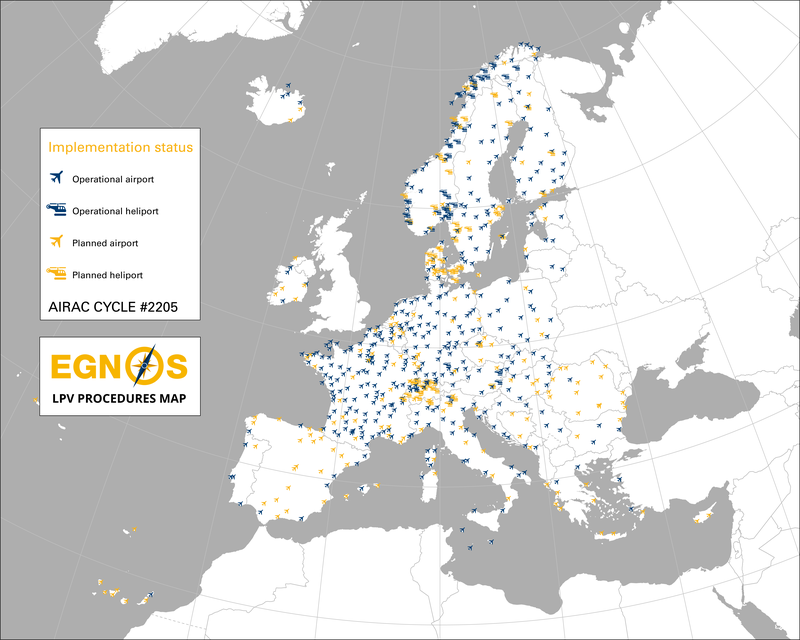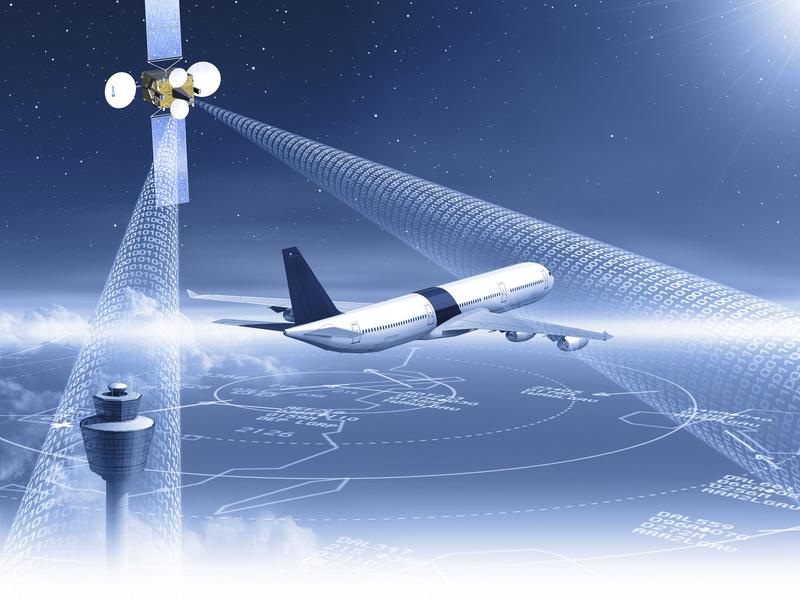
‘The adoption of EGNOS in European airports will be essential before 2030’
That is what Charlotte Neyret, ESSP (European Satellite Services Provider) CEO said, as the PBN implementing rule envisages a full PBN environment by that time. In fact from June 2030, all phases of flight should be based on PBN implementations, being conventional navigation restricted to a backup role (with the exception of CAT II, CAT IIIA or CAT IIIB operations). This significantly remarks the role and importance of EGNOS as a key enabler of PBN.
This was one of the conversation lines that “Space and ATM” session tackled during the WATM 2022 at the “Europe for Aviation” stand hosted by EUSPA (European Agency for the Space Program). This panel session brought together key players from European organizations and service provider to discuss the role of space in ATM, covering different approaches from the research and development phase to the implementation process and new applications to come.
Space services have been supporting the transformation of Air Traffic Management (ATM) for decades in air navigation and the deployment of space-based augmentation systems; for instance since the declaration of the Safety-of-Life Service back in 2011, EGNOS Service has been bringing benefits to aviation users thanks to the EGNOS-based approach procedures, a cost-effective solution for airfields that provided accuracy and reliability similar to an ILS category I approach.
However, the EGNOS role was definitely reinforced with the publication by the EU of the PBN Implementing Rule, establishing an obligation to all European airports operating instrument runway ends, to implement PBN approaches according to the navigation specification defined by ICAO. PBN IR emphasizes the safety and cost-efficiency considerations brought by EGNOS when establishing LPV approaches.
ESSP is currently providing service through the EGNOS working agreement (EWA) process. There are currently 78 EWAs in force, covering at the beginning of 2021 all 27 European Union member states, with different users such as ANSP (conventional operations), Aerodrome Operator (Non-ATS environments), Rotorcraft Operator (fostering HEMS operations “Helicopter Emergency Medical Services”), Military Airports are now paving the way for future use of EGNOS in UAS/UAM domain.
ESSP, as the EGNOS Service Provider, delivers 24/7 monitoring services and analysis of EGNOS performance. ESSP also supports users interface and development of EGNOS-based applications. Today, there are more than 400 EGNOS-based procedures in different European Airports.

Charlotte Neyret also noted that for larger Airlines, she was pleased to highlight the recent achievement with EasyJet: “At the end of last month, Airbus celebrated the delivery of the first A320 equipped with the SBAS Landing System function. This aircraft (MSN 10849) was delivered to EasyJet.”
Space-based communication, navigation and surveillance services momentum
Several speakers in this session referred to the fact that new Space services are continually evolving to meet new market needs on Communication, Navigation and Surveillance services, and we could also learnt from the perspective of ESSP, as a Pan-European service provider’s view, on how to integrate new opportunities in CNS services.
“Thanks to the space solution, unlike ground stations, there is the possibility of offering a pan-European service, higher quality of the service, and cost harmonization. Specifically speaking of navigation, spaced-based services clearly offer technical and operational advantages such as the performance and quality of the service in terms of integrity, continuity and availability, and greener and optimization of costs for Airline operations thanks to fuel economy” remarked Charlotte Neyret, ESSP CEO. “In fact ILS decommissioning is underway”, she added.
“In terms of safety, there are new communication needs, new challenges on security and data exchange protocols, and to meet highest security standards are our top priority” said Charlotte Neyret.
And it seems clear than CNS services will have to be provided in accordance with Standards such as Eurocae, ICAO, CP1 regulation, to meet the highest security protocols, and ESSP is certified to offer space-based critical services to users.
“In the field of datalink communication services, we can affirm that this technology will provide ATM with an improvement and optimization of its operation processes, giving support to connected aircraft. This is already a reality with the “IRIS SatCom Datalink programme” launched by ESA (European Space Agency)”, explained Charlotte Neyret.
The IRIS technology is complementary to VDL2, and it is a mature technology with validated performance and certified receiver available for airlines.
Charlotte Neyret continued:“The Iris programme is a game-changer for the aviation industry, providing the most advanced new technology to complement datalink communications and meet the challenge of digital, greener and more sustainable air travel. As a stepping stone for the future datalink service provider organisation under discussion, ESSP is proud to lend its expertise on this important programme that will deliver a pan-European certified service for the first time.”

For further information, follow us on: Twitter | LinkedIn | YouTube |
